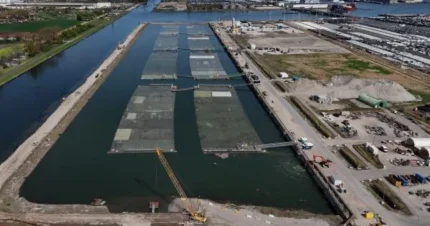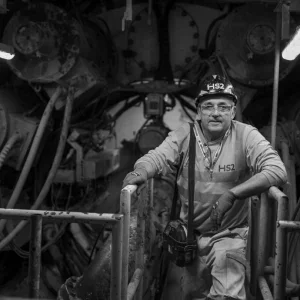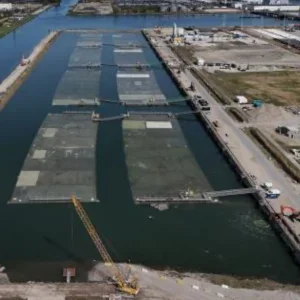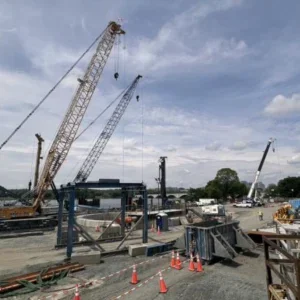
Lantis and contractor TM Cotu started floating the first section of the Scheldt Tunnel in the Zeebrugge construction dock on Saturday.
The eight concrete tunnel sections, each weighing up to 60,000 tonnes, have been lying on the bottom of the construction dock for just over two weeks. Each tunnel section contains five ballast tanks filled with water to keep them on the bottom. The tanks of the first tunnel section are now being emptied, allowing the element to float to the surface.
On May 19 this section will set course for Antwerp, via the North Sea and the Scheldt river. There the Scheldt Tunnel will form a crucial link in the Oosterweel ring road.
During the floating process, cables keep the tunnel section precisely in place. Initially, the tunnel section rises too far above the water when the ballast tanks are completely emptied. The tunnel section must then sink just enough so that only the roof plate remains above water.
“We have to control a gigantic piece of floating concrete during the floating process and then balance it correctly to the centimetre,” said TM Cotu project manager Philippe Van Gorp. “After floating, we pour concrete as ballast in various places inside the tunnel section, so that it ultimately floats perfectly level. During this process, workers are inside the tunnel section to carry out the concrete work accurately.”
Excavation work has also started to create an opening in the dyke of the construction dock. Since April 22, excavators have been working to create the passage through which the tunnel sections can leave the dock. The 100km journey to Doel Dock in Antwerp is expected to take around 30 hours.
The first tunnel section is planned to be submerged in early July. Client Lantis and contractor TM Cotu expect all eight tunnel sections to be in place by the end of the year, depending on tides and weather conditions.
The Scheldt Tunnel consists of two tubes for car traffic, a 6m-wide tube for bicycles and an emergency tunnel.
Cyclists will be able to use the tunnel from 2028 and it will open to vehicles in 2030. The entire Oosterweel connection will open in 2033.







